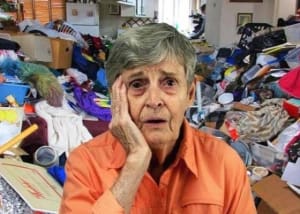
Hoarding in Older Adults (2HR)
$32.00
What do providers need to know and understand about hoarding disorder in older adults? This training will focus on the etiology of hoarding in older adults, including diagnostic criteria and assessment. Treatment approaches and strategies for supporting older clients and families will be discussed. Learners will obtain increased knowledge, perspective, and confidence in working with older adults who hoard.
Upon completion of this training, participants will be able to:
- Describe the etiology of hoarding in older adults and DSM-5 diagnostic criteria for hoarding disorder.
- Explore best practices and treatment approaches for managing hoarding disorder in older adults.
- Identify methods of supporting family members and hoarding resources.
Social workers completing this course receive 2 Clinical/General Skill Building asynchronous continuing education credits.
For other board approvals, this course qualifies for 2 hours of Clinical, Evidence-Based Practices, and General Skill Building continuing education training.
Course Instructor: Diane Bigler, LCSW, LSCSW
Recording Date: 6/26/2024
Recorded Live Webinar with downloadable presentation slides and/or handouts, evaluation, and a required quiz. The learner is required to pass with a 70% or higher to achieve the CE certificate of completion. The learner is able to reset the test until a satisfactory score is achieved. CE Training Workshops, LLC, provider #1770, is approved as an ACE provider to offer social work continuing education by the Association of Social Work Boards (ASWB) Approved Continuing Education (ACE) program. Regulatory boards are the final authority on courses accepted for continuing education credit. ACE provider approval period: 8/2/2022 – 8/2/2025. CE Training Workshops, LLC has been approved by NBCC as an Approved Continuing Education Provider, ACEP No. 7091. Programs that do not qualify for NBCC credit are clearly identified. CE Training Workshops, LLC is solely responsible for all aspects of the programs. System Requirements: Firefox, Chrome, Brave, Safari, Edge on any modern operating system (Windows, MacOS, Linux, Android, iOS). A desktop browser is recommended. We do not provide support resources for issues encountered using a mobile device. For more information about our policies and board approval statements, please visit our FAQS page.
Diane Bigler, LCSW, LSCSW is a Licensed Clinical Social Worker in Missouri and Kansas with over 25 years of experience in the mental health field.
Hoarding in Older Adults (2 HR) Syllabus
I. Understanding Hoarding Disorder in Older Adults
- Define hoarding disorder per DSM-5-TR criteria
- Review prevalence, onset patterns, and links to trauma and grief
- Examine co-occurring mental health conditions and cognitive decline
- Discuss Diogenes Syndrome and its characteristics
II. Consequences of Hoarding Behavior
- Explore functional impairments such as blocked access to essential household spaces
- Review social isolation, financial strain, and loss of housing
- Understand the medical risks including injuries, fatigue, and respiratory issues
- Identify legal complications such as code violations, eviction, and elder neglect charges
III. Cognitive and Emotional Features of Hoarding
- Discuss challenges in categorization and decision-making
- Explore poor memory confidence and fear of forgetting information
- Understand emotional attachment to items based on sentiment or security
- Identify patterns of “shifting and shuffling” and perfectionism in item organization
IV. Assessment and Treatment Stages
- Conduct comprehensive assessment using tools like the Hoarding Rating Scale
- Establish clear treatment goals including safety and harm reduction
- Provide psychoeducation to increase insight and normalize the process
- Use motivational interviewing to support ambivalence and build engagement
- Teach organizing and problem-solving skills
- Incorporate cognitive therapy and exposure methods
- Focus on reducing acquisition behaviors and relapse prevention
V. Harm Reduction and Functional Improvement
- Aim to maintain clients in their homes and reduce risk
- Prioritize improving safety, access to basic needs, and comfort
- Collaborate with community resources and support systems
- Acknowledge and validate client identity and autonomy
VI. Enhancing Motivation and Engagement
- Use targeted inquiries to assess values, readiness, and support
- Facilitate goal setting with tools like the Change Plan Worksheet
- Emphasize functional goals over aesthetic outcomes
- Utilize behavioral experiments and task lists to promote action
VII. Reducing Acquisition and Preventing Relapse
- Develop contracts and SUDs (Subjective Units of Distress) scales to monitor progress
- Implement accountability through sponsors or peer support
- Practice non-shopping trips and non-acquiring strategies
VIII. Communication Do’s and Don’ts
- Avoid judgmental language and unsolicited advice
- Match client language and honor their emotional connection to items
- Encourage storytelling and reflective pacing
- Focus on safety and collaboration, not forced discarding
IX. Long-Term Support and Professional Involvement
- Set behavioral guidelines to address root causes, not just clutter
- Refer to professionals like geriatric care managers or therapists
- Educate families to maintain respectful and supportive dynamics
X. Resources for Clinicians and Families
- Provide handouts, forms, and motivational tools
- Share video links, websites, and support networks
- Recommend books and articles from leading experts in hoarding treatment


